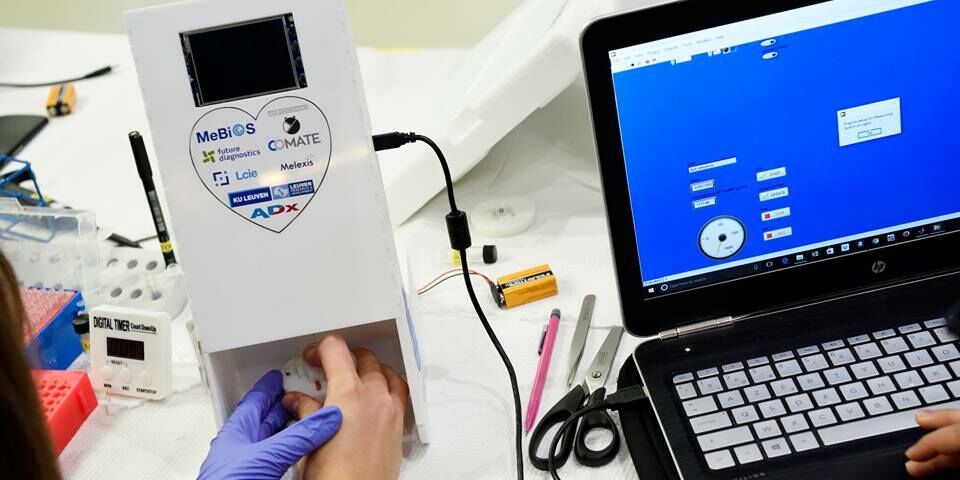Home team steals SensUs show
The T.E.S.T. team from Eindhoven has emerged as the clear winner of the SensUs competition that took place last week Friday and Saturday at TU/e. The home team won three of the four categories: analytical performance, translational potential and public inspiration. Only the award for creativity went to the Swedish team Uppsense.
SensUs, organized by students of the TU/e Honors Academy, was being held for the second time. The aim of this year's competition was to develop a biosensor capable of signaling imminent heart failure. Used in the blood, the biosensor had to pick up the presence of what is known as a biomarker, in this case NT-proBNP, a protein.
The approach chosen by TU/e team T.E.S.T. was to cause magnetically sensitive globules to attach to the biomarker, which a laser subsequently made visible. Among all the sensors, this method proved to work best, and the partly international jury was evidently impressed by its applicability in clinical practice.
As a bonus, the home team also received the most votes from the public, enough to secure the Public Inspiration Award. The creativity award was won by the team from Sweden's Uppsala - which incidentally also used magnetic globules.
Each of the ten student teams, from nine different countries, was allocated two places in the Auditorium's hall on Friday afternoon. Ranged along one side the participants stood ready to explain to visitors how their homemade sensor worked. Across from them, their sensors were put through genuine tests. Test tubes containing human blood plasma were on hand in the refrigerator.
Eighteen times the teams were required to measure the concentration of the biomarker with their homemade sensors, a task they were given first fifteen, then ten, and finally five minutes to complete. The results - in the form of correlation scatter plots and graphs showing used sample volumes - were broadcast immediately on monitors.
SensUs Digital
Meanwhile the teams also delivered two different pitches: one about the details of the technique used (the technical pitch), and one in which the practical applicability of the method was illuminated (the translational pitch). These too were recorded, and were available for viewing almost immediately on the website.
This was all part of SensUs Digital - an ambitious attempt to broadcast the event live for the benefit of those keen to watch worldwide. The organizing SensUs team (not to be confused with the participating T.E.S.T. team) had engaged a group of Software Science students to build a digital platform for the event. This served, among other things, as the forum where questions could be put to the teams. The platform was intended to host no fewer than fifteen live streams, fed in part by webcams and in part by professional camera work.
As it happened, only some of these fifteen live streams were actually online on Friday afternoon. Similarly, the sound was sometimes intermittent, as if there was too little band width to broadcast all the streams.
Nonetheless Willem Brekelmans of the team that set up SensUs Digital is satisfied with how things went. "We will be looking into what caused the problems. In addition, some of the teams didn't really pay any attention to the webcams, and at the last minute we had to set up links to YouTube Google wouldn't allow us to 'embed' certain streams."
But this was a trial, Brekelmans points out, and so teething problems are only to be expected. "During the event we had some three thousand visitors from no fewer than seventy-four countries. Isn't that fantastic? It has encouraged us to consider where else we can use this system. At the RoboCup, for example."














Discussion